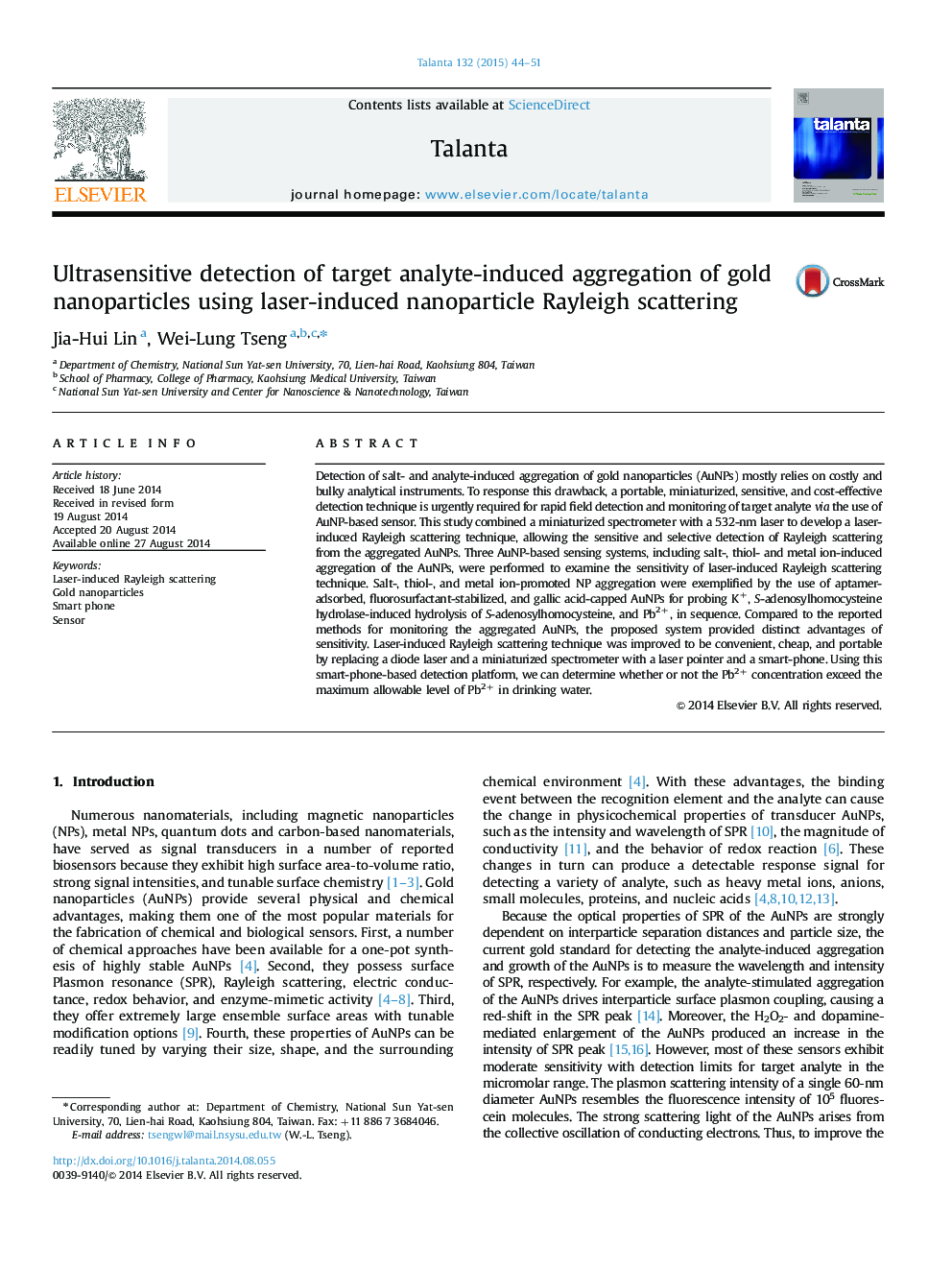| Article ID | Journal | Published Year | Pages | File Type |
|---|---|---|---|---|
| 1241986 | Talanta | 2015 | 8 Pages |
•Laser-induced Rayleigh scattering is sensitive to detect aggregated nanoparticles.•The proposed system coupled to aptamer-capped AuNPs was sensitive for K+.•The proposed system coupled to FSN-stabilized AuNPs was sensitive for homocysteine.•The proposed system coupled to gallic acid-capped AuNPs was sensitive for Pb2+.•The proposed system is convenient, cheap, and portable.
Detection of salt- and analyte-induced aggregation of gold nanoparticles (AuNPs) mostly relies on costly and bulky analytical instruments. To response this drawback, a portable, miniaturized, sensitive, and cost-effective detection technique is urgently required for rapid field detection and monitoring of target analyte via the use of AuNP-based sensor. This study combined a miniaturized spectrometer with a 532-nm laser to develop a laser-induced Rayleigh scattering technique, allowing the sensitive and selective detection of Rayleigh scattering from the aggregated AuNPs. Three AuNP-based sensing systems, including salt-, thiol- and metal ion-induced aggregation of the AuNPs, were performed to examine the sensitivity of laser-induced Rayleigh scattering technique. Salt-, thiol-, and metal ion-promoted NP aggregation were exemplified by the use of aptamer-adsorbed, fluorosurfactant-stabilized, and gallic acid-capped AuNPs for probing K+, S-adenosylhomocysteine hydrolase-induced hydrolysis of S-adenosylhomocysteine, and Pb2+, in sequence. Compared to the reported methods for monitoring the aggregated AuNPs, the proposed system provided distinct advantages of sensitivity. Laser-induced Rayleigh scattering technique was improved to be convenient, cheap, and portable by replacing a diode laser and a miniaturized spectrometer with a laser pointer and a smart-phone. Using this smart-phone-based detection platform, we can determine whether or not the Pb2+ concentration exceed the maximum allowable level of Pb2+ in drinking water.
Graphical abstractA sensitive, portable cost-effective smart-phone-based Pb2+ sensor platform was developed by a laser pointer, a smart-phone, and gallic acid-capped gold nanoparticles.Figure optionsDownload full-size imageDownload as PowerPoint slide
